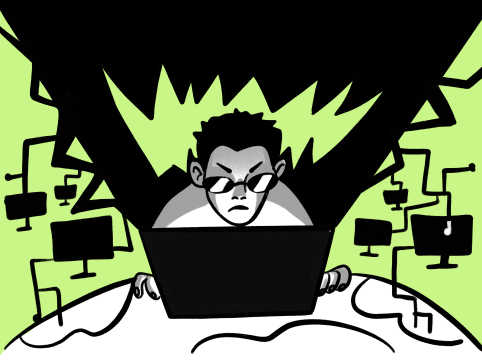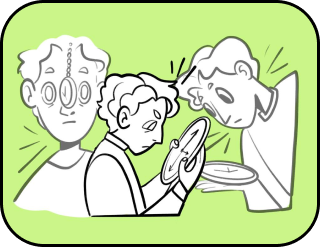How a low-quality antivirus caused a global catastrophe in the computer world and turned its creator into a spy
How often have you found yourself in possession of a low-quality item? How often have you been disappointed by poorly prepared food at a fast-food restaurant? How often have you wanted to vent your anger because the lens fell out of your new sunglasses and shattered on the pavement? How often have you been frustrated because you ended up with a hyped-up but low-quality book, or how often have you been angry because the dentist removed the wrong tooth?
In this task, there’s a student from Taiwan University who went to the store to buy the most powerful antivirus for his new high-powered computer, and there are antivirus manufacturers who, for some reason, produced a low-quality and completely useless product for all computers.
It might seem like there could be only one usual-life decision here — to turn back, demand a refund, or go to court. But the hero of this problem acted differently, causing damage to the entire planet amounting to 1.3 billion dollars. To understand the scale of his anger and distribute the entire damage to the entire population of the planet — every person indirectly paid this student 16 cents.
We’ve outlined in the article which solutions to apply if you do find yourself with a low-quality product and which solution definitely not to apply.
If you find yourself in possession of a low-quality item, the best solution is to acknowledge that such things can indeed happen. It’s not desirable, but “C’est La Vie,” as the French say.
You have the right to contact the manufacturer, provide all the reasons why the item can be considered low-quality, and patiently await a response from them.
If something turns out to be so poor in quality that advice like “don’t get upset” or “buy another one” doesn’t work for you and anger prevails, it’s worth trying to contain the anger within limits.
Anger management coaches recommend applying the following technique:
– Reduce the “temperature” of expectations.
– Honestly and openly ask yourself why all expectations must come true:
Is it possible for everything to always work out? Is it possible for it to rain all the time or for the sun to shine all the time? Is it possible for everyone to hear each other? Is it possible for all manufacturers to only make quality items? Can I change this?
– Transform all expectations into wishes.
– And approach any situation with humor.

On April 26, 1999, a global computer pandemic occurred, unlike anything in history. Thanks to the CIH virus, more than half a million computers worldwide suffered, with all data on their hard drives destroyed.
This virus was notable in that it triggered specifically on April 26 of each year. And that one such virus could physically kill any computer, roughly speaking. Because of this virus, data on hard drives were destroyed, and the content of BIOS microchip contents on motherboards was damaged, the very small programs that give instructions to the device on what to do to start the PC. The CIH virus simply rewrote the BIOS.
How did this virus work? When infecting files, the virus tried to find holes in them. It’s very similar to finding a place for a new chair in an already furnished apartment. In most cases, between the end of the previous section and the beginning of the next one, there are a certain number of bytes that are not used by the program. This is exactly what the virus looked for in the file to write its code there. The file size remained unchanged, just as the square meters of your living space wouldn’t have increased from a new chair.
If such a hole was not found, the virus fragmented its code into blocks and then wrote them to the end of different sections of the file.
After the virus analyzed any executable file and wrote its code there, it checked the system date on the computer and began systematically destroying both data and BIOS.
Because the virus used direct access to data on the disk, it bypassed the built-in BIOS protection. When the virus triggered, upon any PC startup, the user saw only a black screen. Just a black screen and nothing more.
In this case, it was necessary to discard the motherboard and take the faithful hardware friend for repair for BIOS reflashing. Users who encountered this dangerous virus also tried to restore all damaged files using recovery utilities but often faced failure.
At first, the virus was distributed in local internet conferences, thanks to which the virus managed to escape beyond Taiwan and within a week infect computers in other countries. About a month later, the virus was discovered on American gaming web servers, which most likely caused the mass epidemic.
The student who decided to punish antivirus manufacturers and gave birth to the dangerous virus is named Chen Ing-Hau. After the virus began to spread uncontrollably and acquired many modifications, Chen Ing-Hau wrote and published a utility, which was freely available, that recognized and destroyed the virus, and this helped him avoid imprisonment in 1999. But in 2000, Chen Ing-Hau still went to prison, and in many countries, he remains a persona non grata as a dangerous spy.

Your thought is a big bang of ideas. Our journal is its source.
Thank you!




